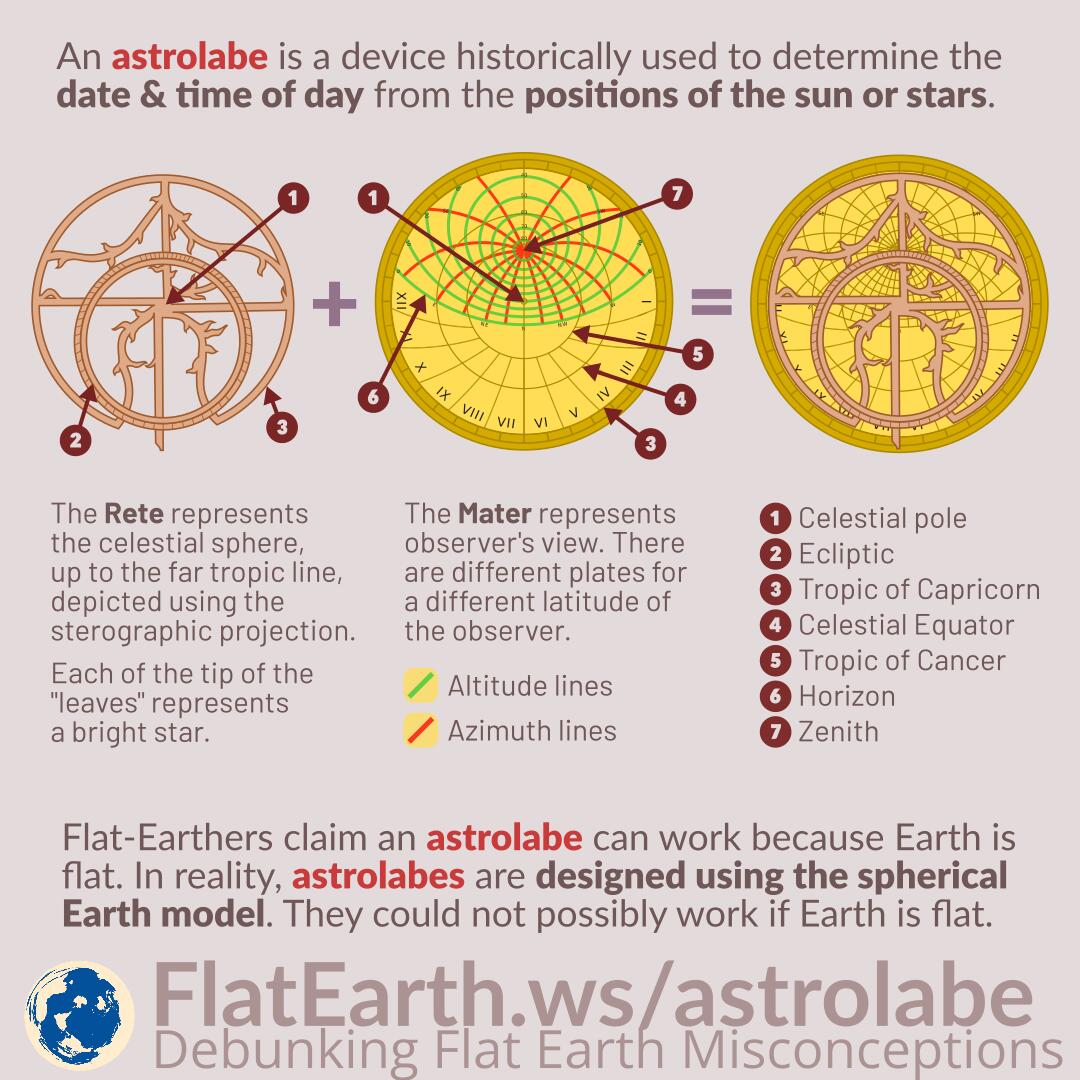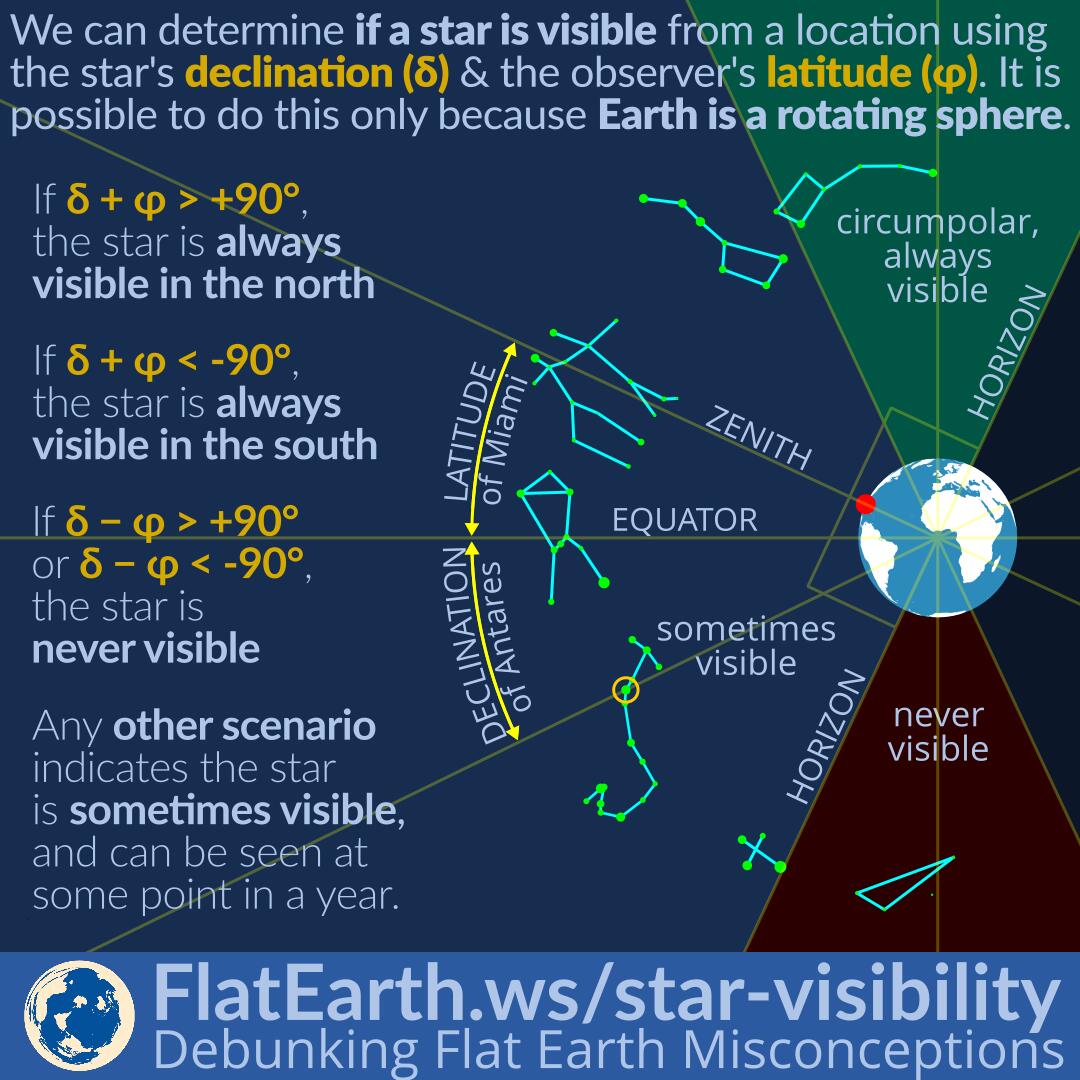An astrolabe is a device historically used to determine the date and time of day from the positions of the sun or stars. Astrolabe was used from classical antiquity, about the 2nd century BC, until the age of discovery. It was superseded by the more accurate sextant, star charts, and time-keeping devices.
Flat-Earthers claim an astrolabe can work because Earth is flat. In reality, astrolabes are designed using the spherical Earth model. They could not possibly work if Earth is flat.



